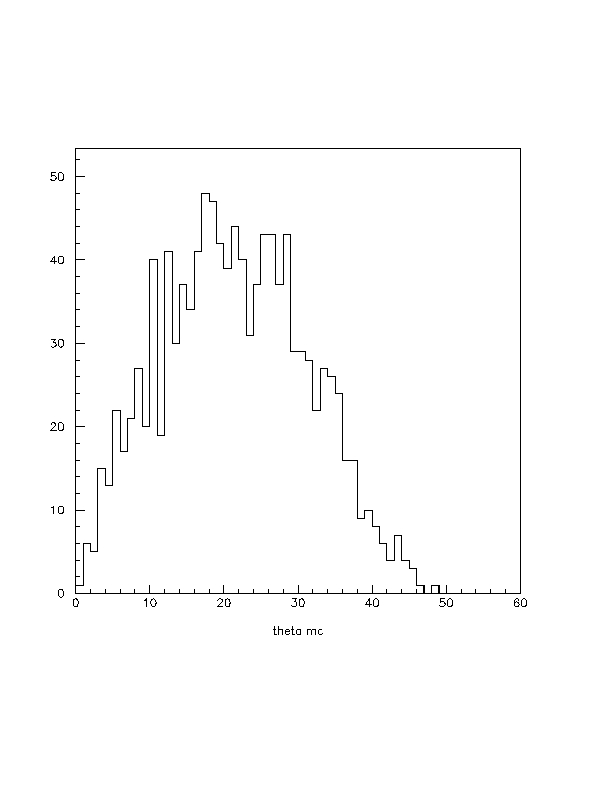
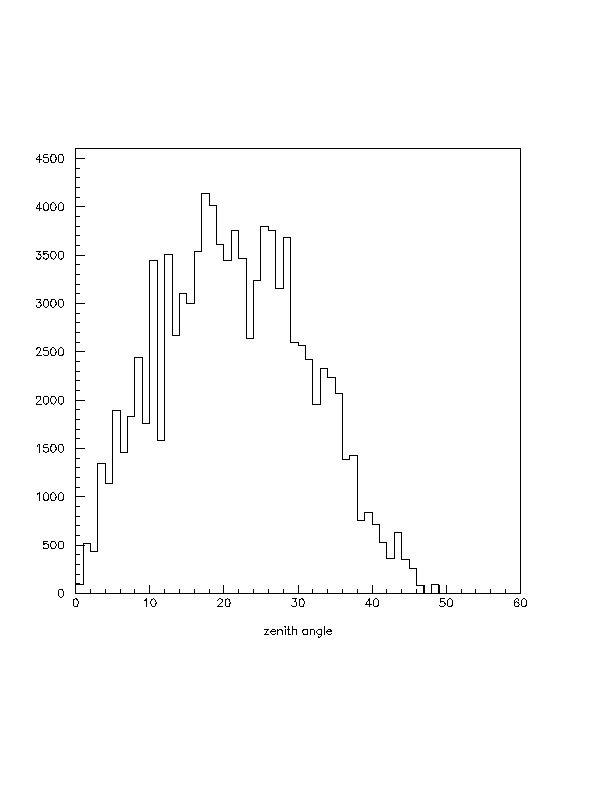
In a recent memo, Lazar and Roman Fleysher discuss a method of determining the speed of light to use in the reconstruction. The method involves determining the slope of the curve obtained by plotting the sine of the true zenith angle as a function of the sine of the reconstructed zenith angle (henceforth the "sin-sin curve"). Using Milagrito Monte Carlo data, they find that the slope of this curve is 0.96, suggesting that we should use 0.96c as the speed of light in the reconstruction. As they mention in their memo, I had suggested that the deviation from unity slope might be the result of "phase space." In this memo, I investigate that hypothesis quantitatively. I conclude that resolution smearing alone does result in a slope less than 1., but the curve we obtain from the Monte Carlo may have additional effects as well. Since at least some of the effect is from the smearing of the angular resolution, it would not be correct simply to use 0.96c in the reconstruction.
The sin-sin curve will have unit slope if there is no bias in the reconstruction shifting events to larger or smaller theta. Using an incorrect speed for the shower front propagation is an example of a bias that changes the slope. Another bias arises because of the spherical geometry and the smearing that results from imperfect resolution. When an event at some zenith angle is reconstructed with a pointspread function which is azimuthally symmetric, more than half of the probability distribution lies at larger theta than the true theta. This is most apparent near zenith, but is true at all angles. Hence, a reconstruction which is unbiased in space angle does produce a bias in zenith angle. The direction of the bias is to reduce the slope of the sin-sin curve. This effect I had called "phase space," but "resolution smearing" might be a better description.
I have made a simple simulation in order to see how big an effect the resolution smearing has on the sin-sin curve. As input for the simulation, I use results of the full Monte Carlo simulation for the zenith angle distribution (theta) and the space angle difference between the true and reconstructed directions (delangle). I throw showers from the theta distribution, smear them in space angle according to the delangle distribution, and then make the sin-sin curve. (In practice, I choose a space angle azimuthally symmetric about zenith from the the delangle distribution, and then rotate the direction by theta.) The resulting sin-sin curve depends only on the shape of the delangle and theta distributions, regardless of the details of the reconstruction.
 |
 |
The plot on the left above is the zenith angle distribution for gamma events satisfying an 80 tube trigger from the Milagrito Monte Carlo. This is the distribution from which the zenith angle was thrown in the simple simulation. The resulting distribution in thrown theta is shown on the right, and is the same, as expected. Similarly, the delangle distribution for the triggered Milagrito Monte Carlo events is on the left below, together with the thrown distribution on the right.
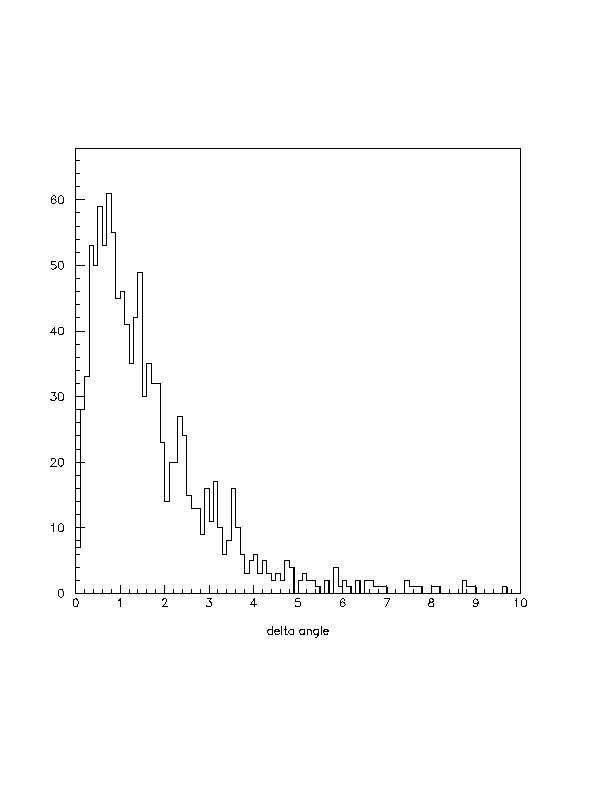 |
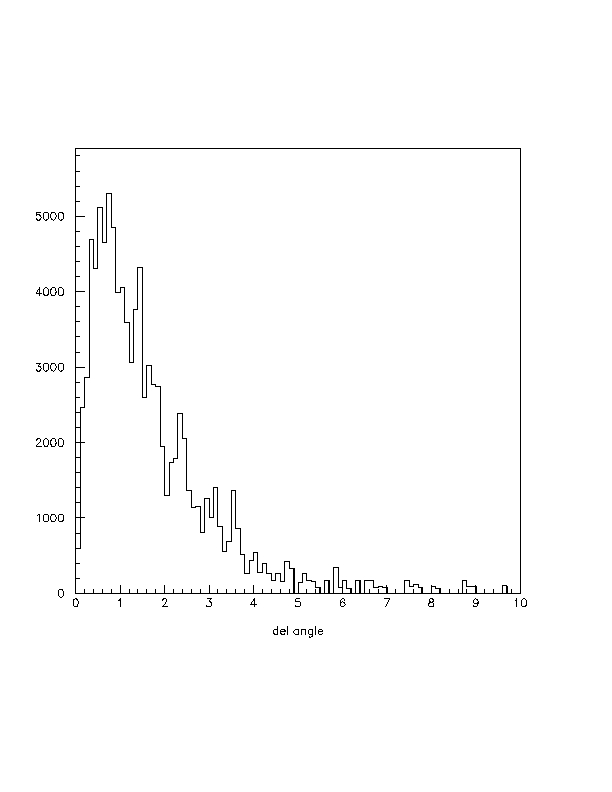 |
The sin-sin distribution can now be calculated, both directly from the full Monte Carlo simulation, and from the simple simulation based only on the two distributions. The full Monte Carlo result is on the left below, together with a fit over the region from 0.1 to 0.7. The slope is 0.956, consistent with the result obtained by the Fleyshers. On the right is the sin-sin plot from the simple simulation. It has a slope of 0.985.
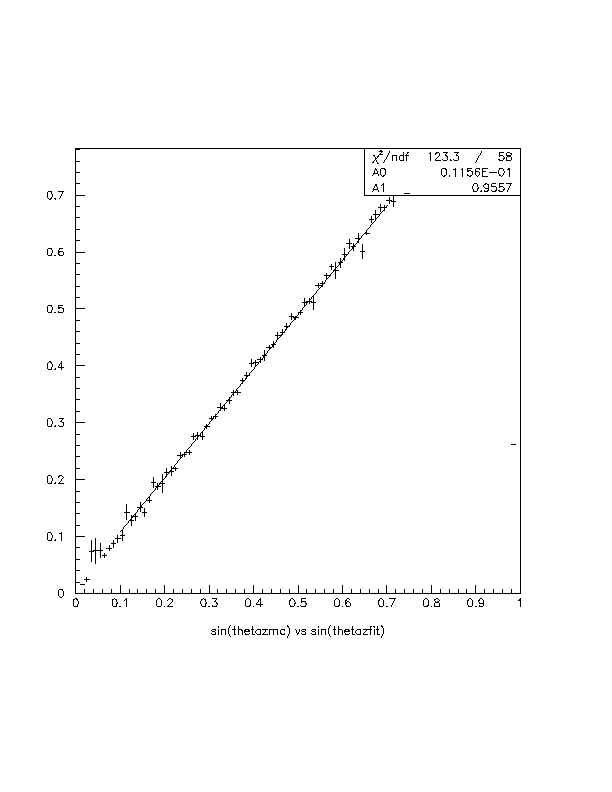 |
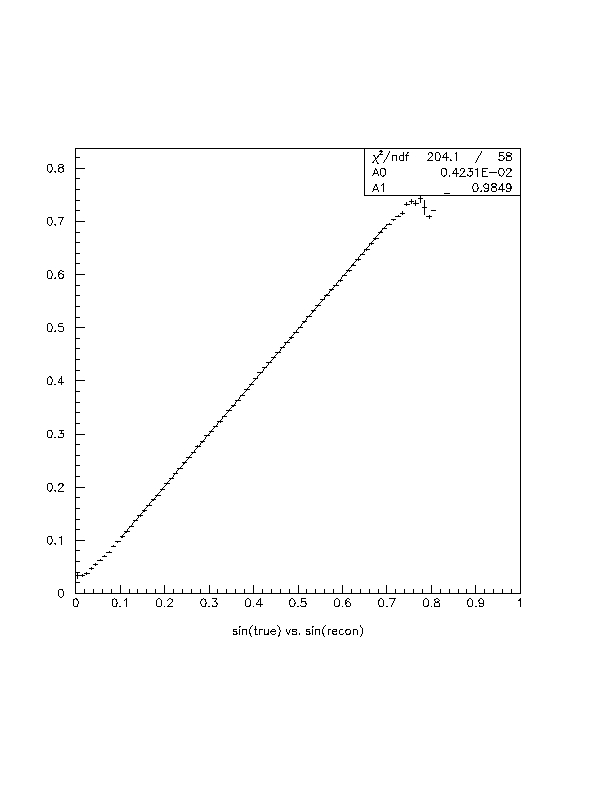 |
Thus, the resolution smearing does contribute significantly to the fact that the slope is less than one, but probably does not account for all of the effect. (The simple simulation does not take into account any correlation between the width of the delangle distribution and zenith angle. To the extent there is a correlation, it might change the strength of the resolution smearing effect.) Since the bias in theta which results from resolution smearing is an artifact of the coordinate system and is not a bias in the reconstructed event direction, it would be incorrect to compensate for it by using an effective speed of light in the shower reconstruction. We will have to sort out the various biases giving rise to the total effect in order to make the appropriate corrections.
It is interesting to note that the sin-sin curve from the full Monte Carlo has a different slope at small and large zenith angles. Over the range of sin(theta) from 0.1 to 0.45 the slope is 0.98+-0.01 (the left plot below) and from 0.45 to 0.70 the slope is 0.92+-0.01. I just happened to choose 0.45 as the transition; it may not be the point which maximizes the effect. The difference is not so pronounced in the simple simulation. The slopes are 0.99 for the first region and 0.98 for the second. The smaller slope in the full Monte Carlo at larger zenith angles is possibly related to the poorer resolution at large angles seen, e.g. by Jordan Goodman.
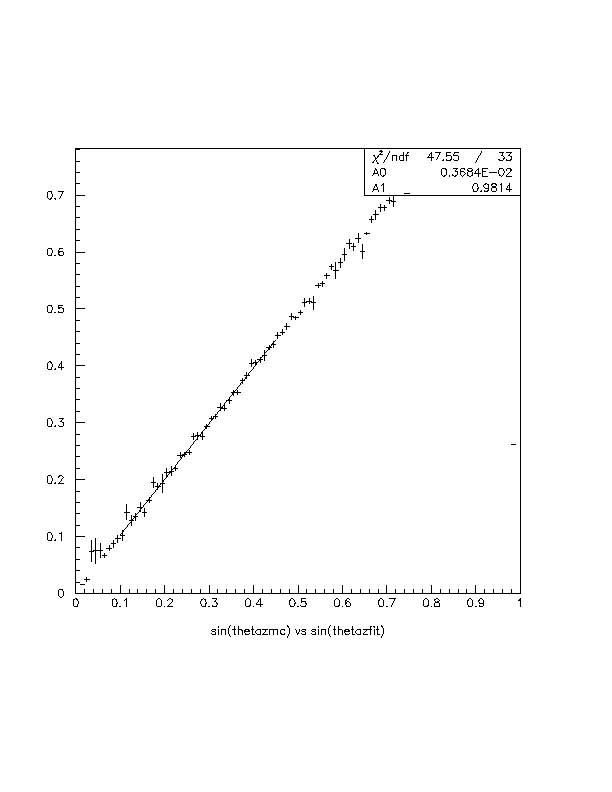 |
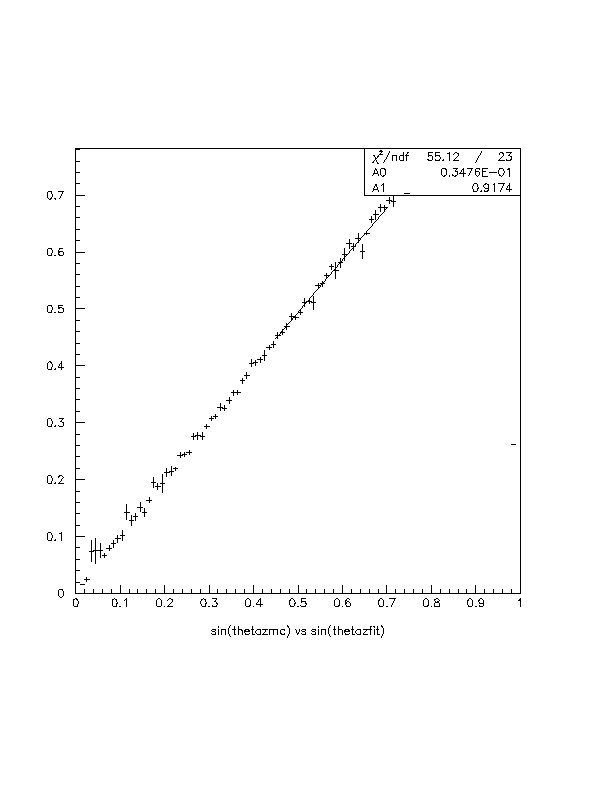 |
For Milagro, the effects are smaller. The simple simulation is repeated using the theta and delangle distributions for Milagro Monte Carlo gamma showers satisfying a 50 tube trigger. The Monte Carlo distributions are shown below. The thrown distributions match these as before, but are not shown.
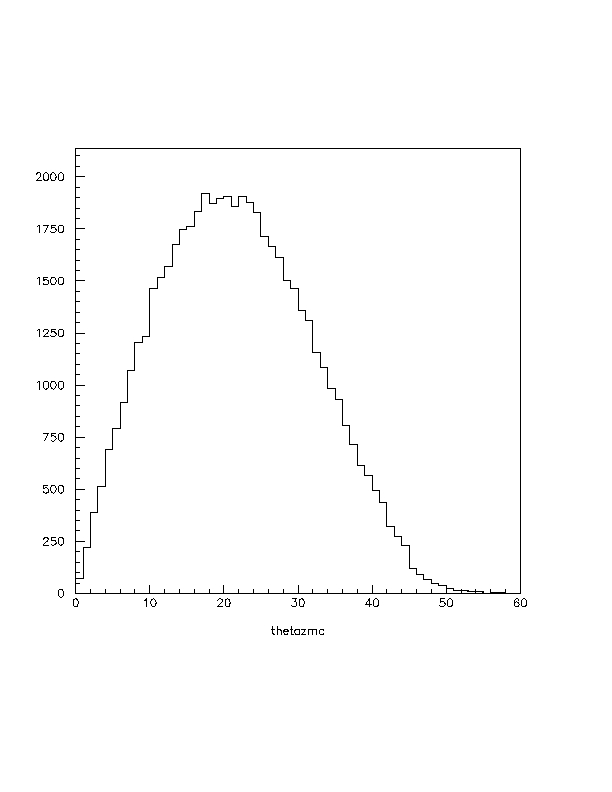 |
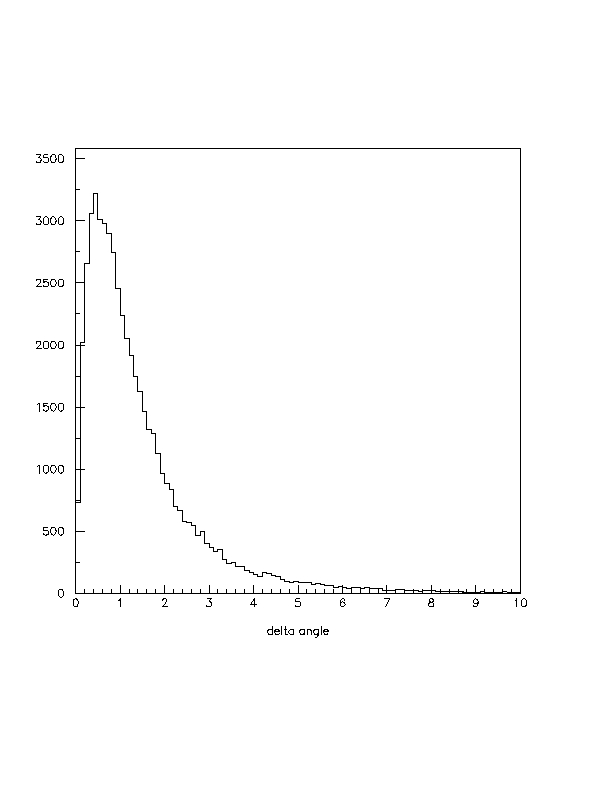 |
Fitting a straight line to the sin-sin curve between 0.1 and 0.7 as before, the full Monte Carlo gives a slope of 0.985 and the simple Monte Carlo gives a slope of 0.989. The plots are shown below. One reason that the slope is closer to unity is the better angular resolution. If the angular resolution is doubled, by doubling the space angle difference for each point selected from the Monte Carlo distribution, then the slope of the line from the simple simulation drops to 0.96.
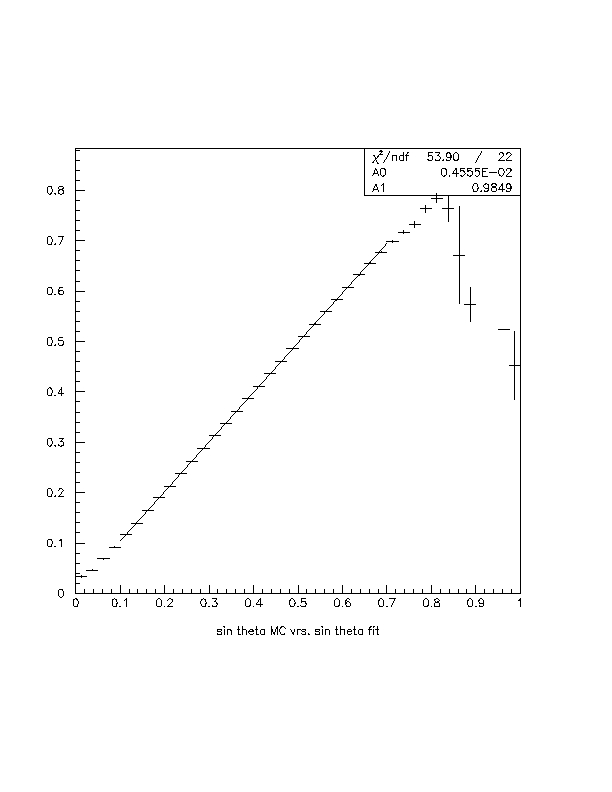 |
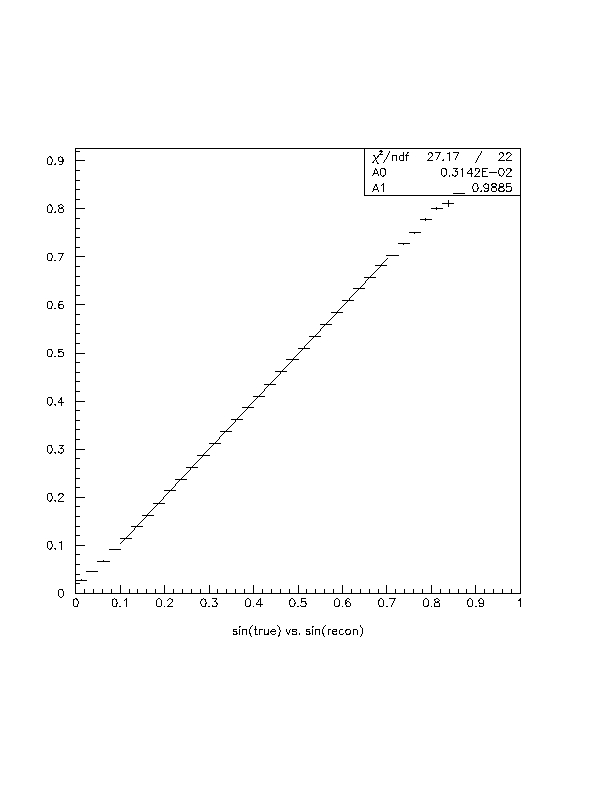 |
The Milagro Monte Carlo curve does not show the difference in the slopes between the small zenith and large zenith section of the plot. The slope is 0.984+-0.002 for 0.1 to 0.4, and 0.979+-0.002 for 0.4 to 0.7. This would agree with the hypothesis above that the slope change is related to the large angle degradation of the angular resolution. This effect is substantially reduced in the Milagro simulation, which includes baffles on the tubes.
In summary, the sin-sin curve is distorted from unit slope by resolution effects, even when there is no space angle bias in the reconstruction. In the Milagrito simulation, the slope of the full simulation is somewhat flatter than produced by resolution smearing alone, so there may be other effects which require correction. The appropriate correction is more complicated than using an effective speed of light. For Milagro, the slope from resolution smearing alone matches the "observed" slope in the Monte Carlo data pretty well, suggesting that resolution smearing is the dominant effect.
I thank Joe McCullough and Stefan Westerhoff for providing Monte Carlo data sets and histograms needed for this analysis.